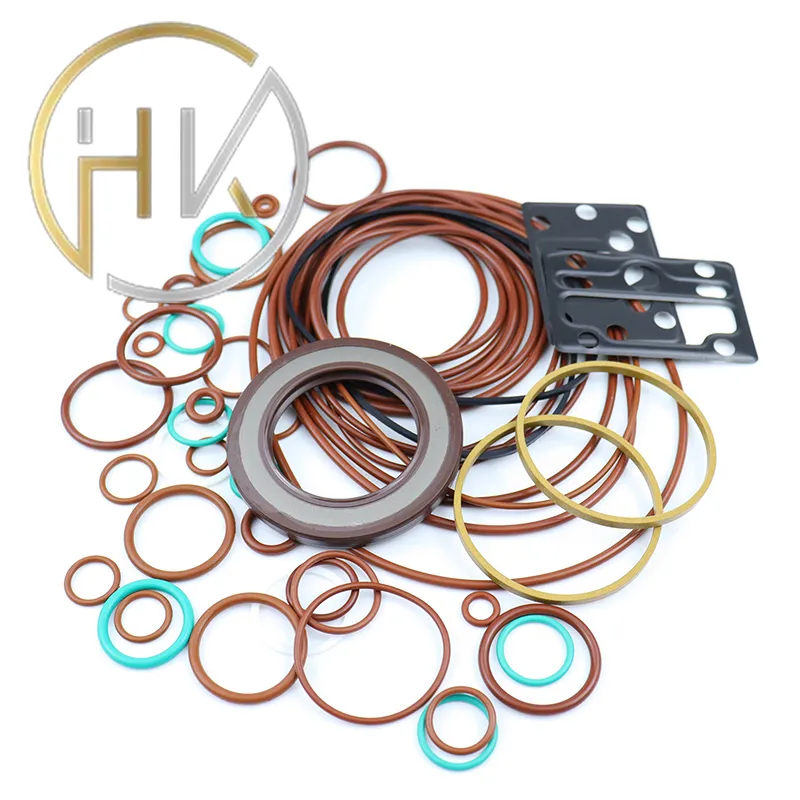Dec . 23, 2024 00:01 Back to list
Rear Hub Seal Maintenance and Replacement Tips for Optimal Performance
Understanding Rear Hub Seals Importance, Function, and Maintenance
Rear hub seals play a critical role in the overall functionality and longevity of a vehicle’s drivetrain. Often overlooked during routine maintenance, these seals are essential components that serve to protect not only the bearings but also the rotor and brake assemblies from dirt, debris, and moisture. In this article, we’ll explore the importance of rear hub seals, their functions, and tips for maintenance to ensure optimal performance from your vehicle.
What Are Rear Hub Seals?
Rear hub seals are specifically designed seals that fit snugly around the rear axle assembly of a vehicle. Their primary purpose is to prevent differential fluid or grease from leaking out of the hub assembly while also keeping contaminants out. These seals act as barriers and are typically made from durable materials, such as rubber or silicone, which provide flexibility and resistance against wear and tear.
Importance of Rear Hub Seals
The significance of rear hub seals cannot be understated. Some of the key reasons why they are vital include
1. Protection Against Contaminants One of the main functions of rear hub seals is to keep dirt, dust, water, and other contaminants from entering the hub assembly. These foreign particles can lead to premature wear and can compromise the effectiveness of the bearings.
2. Fluid Retention The seals help contain lubricant (oil or grease) within the hub assembly. A leak not only reduces the lubricant quantity but can also lead to increased friction, overheating, and, ultimately, bearing failure.
3. Reduced Maintenance Costs By maintaining a proper seal, the lifespan of the components within the hub assembly can be extended. This leads to fewer repairs and ultimately saves vehicle owners a significant amount of money in the long run.
4. Enhanced Safety A compromised seal can lead to brake failure or other critical issues affecting vehicle safety. Maintaining the integrity of rear hub seals is crucial for safe driving conditions.
rear hub seal

Signs of Worn or Failing Rear Hub Seals
Recognizing the signs of worn or failing rear hub seals can prevent more significant issues down the line. Here are a few indicators to watch for
- Visible Leaks If you notice grease or oil pooling around the rear wheels, this may indicate that the rear hub seals are failing. - Noisy Bearings A grinding or roaring noise emanating from the rear wheels can be a sign of inadequate lubrication due to a seal leak. - Unusual Tire Wear Uneven tire wear can be a symptom of issues with the hub assembly, often linked to compromised seals.
Maintenance Tips for Rear Hub Seals
Regular maintenance is key to ensuring that your rear hub seals remain effective. Here are some tips
1. Regular Inspections During routine vehicle checks, examine the rear axles and hubs for any signs of leakage. Addressing small issues before they become major problems can save time and money.
2. Watch for Warning Signs Be attentive to any unusual noises or changes in your vehicle's handling. Getting your vehicle checked by a professional mechanic if you notice any concerning symptoms can prevent further complications.
3. Proper Installation If you’re replacing rear hub seals, ensure they are installed correctly. Poor installation can lead to premature failure. It may be wise to have this work done by a qualified mechanic, especially if you are unfamiliar with the process.
4. Use Quality Parts When replacing seals or any components in the hub assembly, opt for high-quality parts that meet or exceed OEM standards. This can significantly extend the durability of your seals.
In conclusion, rear hub seals may be small components in the grand scheme of a vehicle's mechanics, but their importance cannot be underestimated. They provide critical protection for the hub assembly and help maintain the performance and safety of your vehicle. Regular checks, prompt replacements when needed, and quality maintenance practices will ensure that your rear hub seals do their job effectively and keep your vehicle running smoothly.
-
TCN Oil Seal Metal Ring Reinforcement for Heavy Machinery
NewsJul.25,2025
-
Rotary Lip Seal Spring-Loaded Design for High-Speed Applications
NewsJul.25,2025
-
Hydraulic Cylinder Seals Polyurethane Material for High-Impact Jobs
NewsJul.25,2025
-
High Pressure Oil Seal Polyurethane Coating Wear Resistance
NewsJul.25,2025
-
Dust Proof Seal Double Lip Design for Construction Equipment
NewsJul.25,2025
-
Hub Seal Polyurethane Wear Resistance in Agricultural Vehicles
NewsJul.25,2025
-
The Trans-formative Journey of Wheel Hub Oil Seals
NewsJun.06,2025
Products categories
















